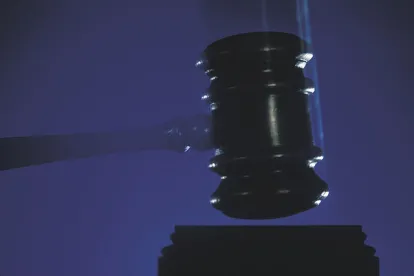State and federal trial court judges repeatedly review evidentiary challenges to experts’ causation opinions in toxic tort personal injury cases. They critically examine voluminous records full of scientific studies and expert testimony in the areas of toxicology, genetics, epidemiology, and industrial hygiene. In the end, the judges repeatedly produce well-reasoned, detailed decisions under the Daubert (applicable in all federal and most state courts) or Frye (applicable in some states) standards for the admissibility of scientific evidence.
Many trial court opinions on expert testimony, however, result in “non-precedential” appellate decisions that affirm and largely incorporate by reference the opinion below. In turn, depending on the jurisdiction’s rules for relying on unpublished decisions, neither the trial court’s detailed analysis of the expert evidence, nor the appellate court’s affirmance, may be citable as authority in future litigation.
A recent “non-precedential” unpublished decision from the Pennsylvania Superior Court, Porter v. Smithkline Beecham Corp., et al., 2017 WL 1902905 (Pa. Super. May 8, 2017), exemplifies this conundrum. The Superior Court’s decision in Porter affirmed a trial court’s detailed opinion excluding the plaintiffs’ experts’ causation opinions under Pennsylvania’s Frye standard. The plaintiffs alleged that a mother’s ingestion of the antidepressant Zoloft while she was pregnant caused her son’s severe abdominal wall birth defect. Incidentally, the Superior Court issued its Porter decision during appellate briefing in another case pending before the Pennsylvania Superior Court that involves the trial court’s exclusion of plaintiff’s causation experts’ opinions that exposure to various pesticide products caused a long-term golf course worker to develop leukemia. In both cases, the defense contended that the plaintiffs’ causation experts’ methodologies suffered from the following flaws:
-
use of an overly broad, scientifically unreliable “causation by analogy” extrapolation approach not specific to the particular chemical products at issue
-
reaching conclusions based on data in study articles, when the researchers/authors of the articles themselves were not willing to reach those conclusions
-
the limitations of using the results of animal studies, particularly where human epidemiology studies did not support the experts’ conclusions
-
failure to identify a viable toxicological mechanism of action for the claimed causal connection
-
failure to properly conduct a dose-response analysis
-
mere citation to, with improper application of, the “Bradford Hill Criteria” used for determining whether a particular product can cause a particular injury or disease (general causation), including failure to properly account for statistical significance and confounding factors
-
failure to properly consider alternative risk factors or causes
In other words, the flaws identified by the trial judge’s analysis in Porter—affirmed with little additional commentary by the Superior Court—were in many respects directly on point with the pesticide exposure case now pending before the Superior Court. Pennsylvania’s state court rules on the use of unpublished Superior Court decisions, however, precludes any litigant from citing such opinions for anything other than law of the case, res judicata, or collateral estoppel grounds (i.e., procedural grounds unrelated to the decision’s persuasive authority). The inability to cite such detailed, well-reasoned decisions—especially where issuing such “non-precedential” opinions is common practice—silences a mountain of expert evidence jurisprudence in an area where persuasive authority is crucial due to the fact-specific, complex scientific nature of such evidentiary challenges.
The ability to use opinions not published in the national reporter system ranges widely depending on jurisdiction, and over the years has been subject of law review articles and opinion pieces appearing in state bar association publications. The trend has been toward allowing more reliance on unpublished decisions, including rules such as Federal Rule of Appellate Procedure 32.1, which was adopted in 2006 and specifically prohibits any federal court from precluding or restricting the citation of unpublished federal court opinions issued after January 1, 2007. Appellate Rule 32.1 essentially recognizes that, at least with regard to decisions by federal judges, precedent is precedent. States like Pennsylvania likewise should consider allowing the use of unpublished appellate court decisions as persuasive authority to fully develop citable precedent in fact-specific areas, such as cases involving challenges to expert evidence on causation.




 />i
/>i
